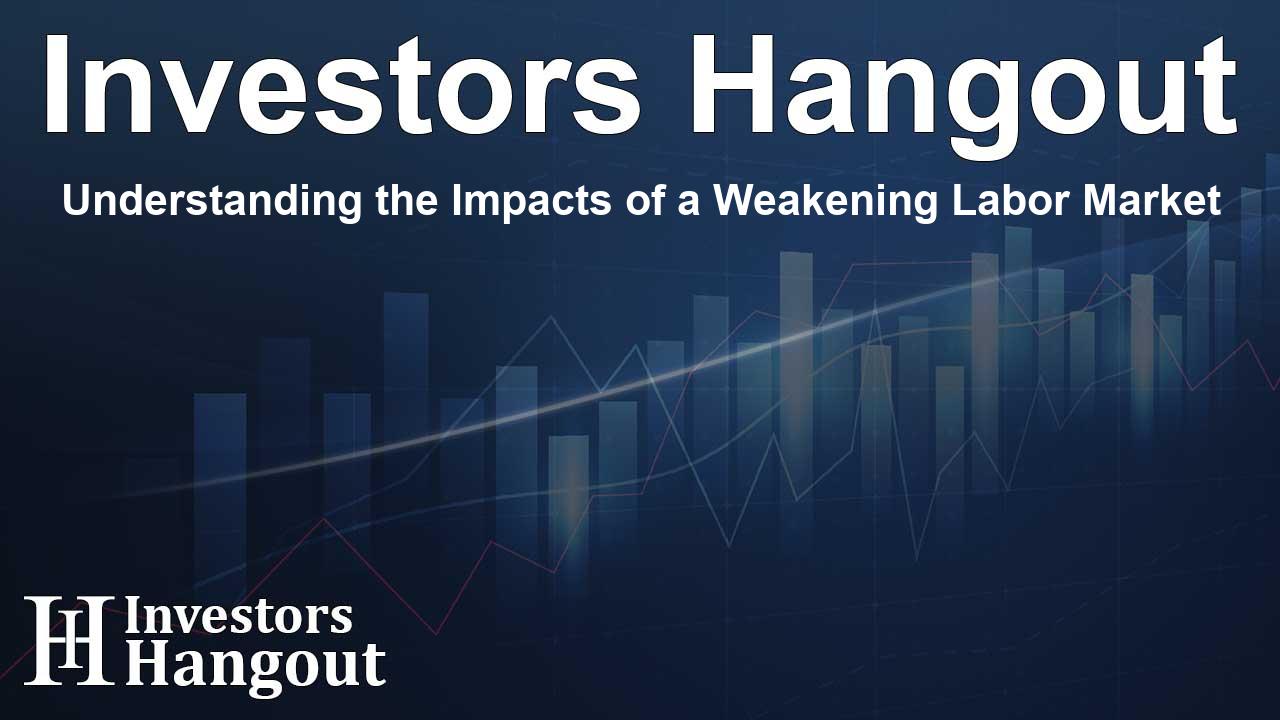Understanding the Impacts of a Weakening Labor Market

Current Trends in the Labor Market
The latest jobs report paints a clear picture: the labor market is starting to cool down. While the headline numbers may seem acceptable at first glance, a closer look reveals a noticeable drop in worker demand. It's essential for investors to understand how employment relates to broader economic trends and market performance, as this connection provides valuable insight into economic activity and corporate earnings.
In an economy driven by consumption, stable employment is a key factor for growth. People need jobs to spend money, which underscores the significance of job security and corporate profitability. Let’s dig deeper into these dynamics.
Slowing Labor Market: An Alert
Analyzing the recent jobs report shows that job creation is faltering notably, especially in critical sectors like manufacturing, retail, and services. Many have held onto the hope that a strong labor market would support the economy, even during tough times.
However, this assumption is increasingly challenged by the rising number of hiring freezes and layoffs. It's vital to pay attention to the overall trends rather than just the employment numbers themselves, as the key takeaway is clear: job availability is on the decline.
Full-time employment acts as a crucial economic indicator. In a consumption-based economy, stable incomes are necessary for families to sustain their spending rates. Typically, full-time jobs provide better wages, benefits, and healthcare compared to part-time positions. A decrease in full-time roles often serves as a sign that an economic downturn may be on the horizon.
Recently, we're seeing alarming trends—over 1 million full-time positions have been lost, while about 1.5 million part-time jobs were added. This discrepancy raises concerns about the strength of economic growth.
Moreover, looking at the ratio of full-time employment to the working-age population helps clarify why maintaining annual economic growth above 2% is challenging. As technology and outsourcing replace domestic labor, the rate of full-time employment has continued to decline, further constraining consumer spending.
Since corporate earnings are directly tied to the economy, companies are increasingly turning to technology and productivity tools to reduce their reliance on human labor. If this trend continues, coupled with declining economic demand affecting profit margins, we can expect downward revisions in earnings forecasts.
Impact on Corporate Earnings
It's important to comprehend how a cooling labor market can lead to weaker corporate earnings. When businesses feel uncertain about future demand, they often pause hiring and pursue cost-cutting measures like layoffs, automation, and outsourcing, or they may rely more on temporary workers. While these tactics may offer temporary relief, they don't fix the underlying problem of dwindling revenue.
If fewer people hold stable jobs, or if wage growth stagnates, consumer spending is likely to decline. This situation could negatively impact major revenue streams for companies, particularly those in consumer-focused sectors. There’s a clear link between annual changes in GDP and swings in corporate earnings.
Considering this connection, when market participants push up stock prices based on expectations of rising earnings, a dip in those anticipated earnings can lead to market corrections. This cycle shows that decreased earnings forecasts may result in lower stock prices as the market adjusts to reflect the new reality.
Therefore, investors need to prepare for the potential impacts that a sluggish labor market could have on stock values. The market relies on future expectations, and adjustments are already in motion due to weaker job growth.
The Investor's Perspective
The consequences for broader financial markets could be substantial as the effects of a weakening labor market spread through the economy.
As we've seen in past economic cycles, investors may pivot away from riskier assets like stocks, opting for steadier investments such as Treasury bonds. Such shifts could increase market volatility, particularly if earnings adjustments reflect slowing growth.
The response of the Federal Reserve is also a factor to consider. Typically, a weakening labor market aligns with lower inflation, which might encourage the Fed to cut interest rates more aggressively. However, if inflation remains above the Fed's 2% target, the central bank could find itself in a tight spot. A significant market risk could arise if the Fed has to keep interest rates high while the economy slows down.
Recent employment reports clearly indicate one trend: the labor market's momentum is diminishing. This situation poses threats for both the economy and the stock market, where a slowdown in job creation combined with falling corporate earnings is setting the stage for increased market volatility.
With markets close to all-time highs, now could be a good time for investors to reassess their portfolio risk exposure. Adjusting positions in overvalued growth stocks and focusing on more defensive assets might be a smart strategy.
Ultimately, safeguarding capital is crucial in uncertain times. The labor market signals that challenging days may be ahead, highlighting the need for investors to tread carefully.
Frequently Asked Questions
What are the current trends in the labor market?
The labor market is showing a clear slowdown, particularly with a significant decline in job creation across sectors such as manufacturing and services.
How does a weakening labor market affect corporate earnings?
A cooling labor market often prompts companies to reduce hiring and cut costs, which can lead to decreased consumer spending and, consequently, weaker corporate earnings.
What should investors do in response to these changes?
Investors should reevaluate their portfolio risk exposure, possibly moving away from overvalued growth stocks toward more defensive assets to help navigate potential market volatility.
How does full-time employment impact economic growth?
Full-time employment is vital for economic growth because it enables households to generate steady income, which in turn supports sustainable consumption and overall economic stability.
What are the implications of Federal Reserve interest rate decisions?
The Fed's decisions on interest rates can be affected by labor market performance; a slowing job market may lead to lower inflation, which could prompt more aggressive rate cuts depending on the economic landscape.
About The Author
Contact Addison Perry privately here. Or send an email with ATTN: Addison Perry as the subject to contact@investorshangout.com.
About Investors Hangout
Investors Hangout is a leading online stock forum for financial discussion and learning, offering a wide range of free tools and resources. It draws in traders of all levels, who exchange market knowledge, investigate trading tactics, and keep an eye on industry developments in real time. Featuring financial articles, stock message boards, quotes, charts, company profiles, and live news updates. Through cooperative learning and a wealth of informational resources, it helps users from novices creating their first portfolios to experts honing their techniques. Join Investors Hangout today: https://investorshangout.com/
The content of this article is based on factual, publicly available information and does not represent legal, financial, or investment advice. Investors Hangout does not offer financial advice, and the author is not a licensed financial advisor. Consult a qualified advisor before making any financial or investment decisions based on this article. This article should not be considered advice to purchase, sell, or hold any securities or other investments. If any of the material provided here is inaccurate, please contact us for corrections.
